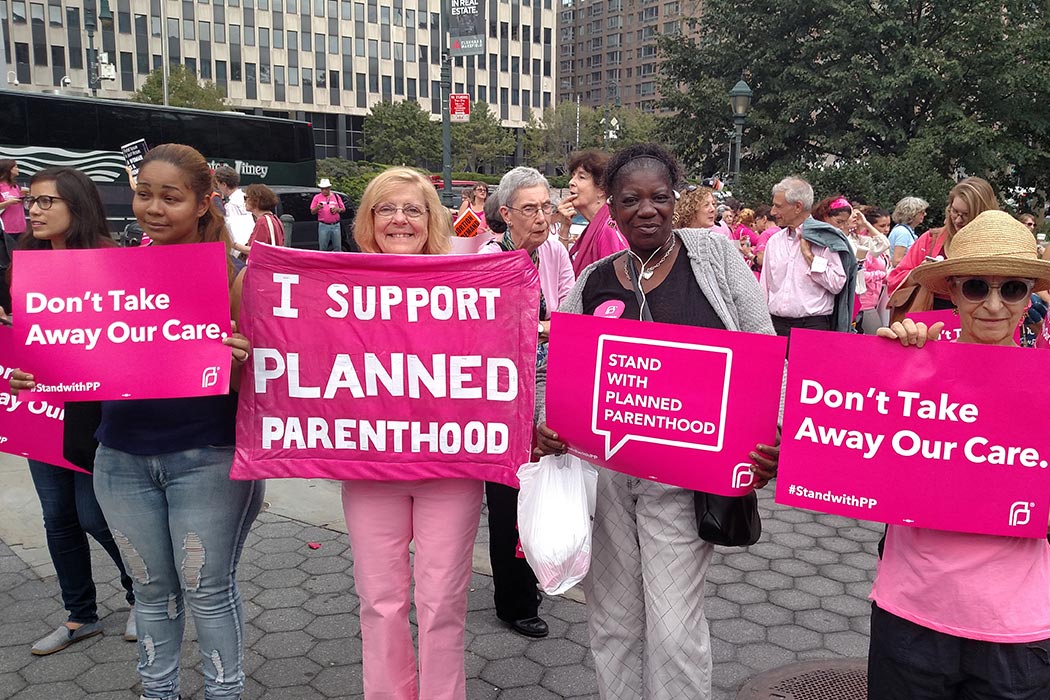Planned Parenthood has been in the spotlight in recent weeks, after the one-two whammy of a mass shooting outside the abortion-services provider and the Senate passing a bill to defund the organization.
Given abortion’s status as one of the nation’s most polarizing political topics, anti-abortion violence is hardly new. In the United States alone, over five abortion provider staffers have been murdered since 1993, and there have been many more instances of attempted murder and arson. Demonstrations outside abortion clinics are, in some areas, commonplace.
In the wake of these attacks, many states have passed legislation that specifically protects abortion clinics and their staffers. Some of these were enacted at the federal level, such as the Madsen vs. Women’s Health Inc. case, in which the Supreme Court upheld the right of “buffer zones” for abortion clinics. Other protections were implemented at the state level.
Since these laws came into being, there has been much theoretical debate about their effect on anti-abortion violence. Some have argued that they would function, as was their intent, as deterrents. Others have said that their existence would likely cause backlash among more radical anti-abortion activists, who become more determined to use violence because these laws suggest their activism is losing ground. In a 2007 paper published in Law and Human Behavior, researchers William Alex Pridemore and Joshua D. Freilich analyzed data from abortion clinics against data tracking state laws protecting clinics and found a surprising result: There was no effect.
Pridemore and Freilich used victimization data, as based on self-reports, provided by the non-profit and pro-choice Feminist Majority Foundation’s 2000 report. The variable of “victimization” was broken down into five different categories:
- major violence (bombing, arson, gunfire, death threats),
- minor violence (bomb and arson threat, chemical attack),
- major vandalism,
- minor vandalism, and
- harassment.
In total, data from 359 clinics was used.
The researchers then compared these numbers with data on the state laws specifically protecting abortion clinics, as provided by the NARAL Foundation, and controlled for the effects of religious conservatism.
Overall, 7% of abortion clinics were targets of major violence, 9% of minor violence, 7% of major vandalism, 27% of minor vandalism, and 44% of harassment. Of these clinics, 41% were in states that had laws protecting them from harassment. Despite this, the researchers found no support for either hypothesis. That is, the laws neither deterred attacks on abortion clinics, nor increased them, a surprising result given the ink that has been spilled theorizing over the effects of such laws.
Pridemore and Freilich offer a few suggestions for this result. One is that the data on abortion providers was not specific enough. First, the clinics that participated in the survey only reported whether they experienced victimization, not how many times it occurred, which is arguably an important part of the puzzle. Secondly, the clinics didn’t provide information such as the size of each clinic’s staff.
There are two other potential reasons for this null hypothesis. One is that state laws may be, ultimately, “superfluous” in light of federal protections for abortion. The other is that some of the most prominent and radical anti-abortion camps—such as Operation Rescue or Army of God—coordinate at the national level, thus making specific state laws less of an effective deterrent. This hypothesis is supported by the fact that many of the same activists have been arrested for anti-abortion activities in different parts of the country.







